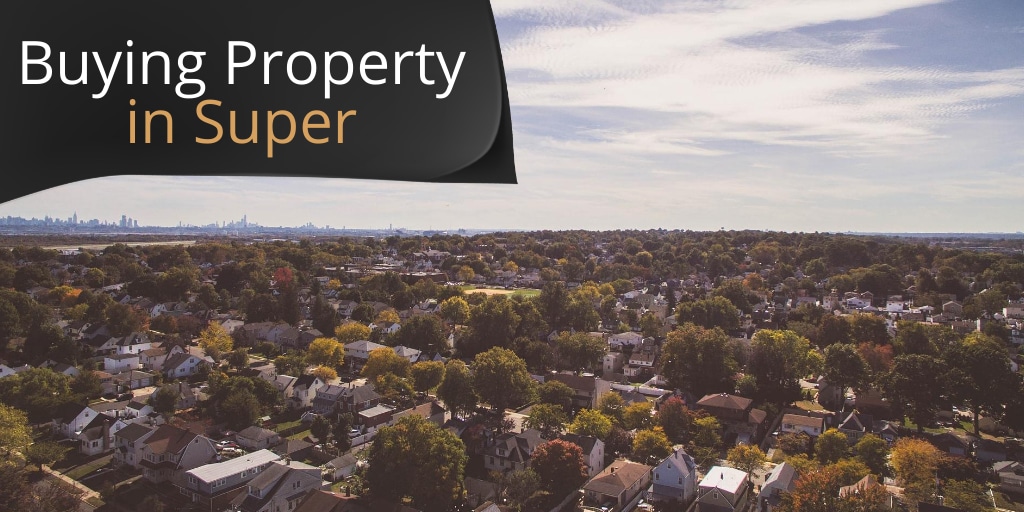Property investment and superannuation are two major investment strategies for Australians. For most people, property and super are separate investments — but they don’t have to be.
We highlight everything you need to know about investing in property using your super in Australia.
Can I buy property in super?
You can buy an investment property inside super, but only if you have your own self-managed super fund (SMSF).
As the name suggests, an SMSF is a fund that you manage yourself. One of the benefits of setting up a self-managed super fund is that you have total control over what assets you are investing in, provided you comply with Australia’s superannuation laws.
Unlike retail and industry funds, SMSFs can invest in property provided that four conditions are met:
- the property must be bought solely as an investment to provide for your retirement (this is known as the sole purpose test).
- It must not be bought from a related party.
- You cannot live in the property (and nor can a related party).
- You cannot rent residential property yourself (and you cannot rent it to any of your relatives). However, you can lease commercial property back to yourself or a relative for business use, provided the lease payments reflect current market rates.
The benefits of buying an investment property inside your self managed super fund
There are four major potential benefits of buying property inside your SMSF:
1) tax savings
Super is an extremely tax-effective investment in Australia. Any earnings (including SMSF property income) are taxed at only 15%. Australians on an average income pay tax at a marginal rate of 32.5%. Australia’s top earners pay a marginal rate of 45%.
So you’ll pay less tax when you buy property inside your SMSF if you’re still earning other taxable income. The more you earn, the more tax you’ll save.
2) reduced capital gains tax (CGT)
Provided you hold your SMSF property for at least 12 months, you will be entitled to a 33% CGT discount on any profit you make when you sell the property. This means you will only pay 10% tax on your selling profit, rather than 15%.
3) increased buying power if your SMSF has more than one member
Since 1 July 2021, SMSFs in Australia can have up to six members (the previous limit was four members). If your fund has two or more members, you can pool your funds to buy higher value, higher-quality properties. This can give you the opportunity to increase both your rental property income and capital growth potential.
4) asset protection
If you borrow to buy property via your SMSF, the other assets in your superannuation fund are protected from creditors under Australia’s superannuation legislation, unlike assets that are bought outside of super.
Using SMSF loans to accelerate wealth-building potential
Borrowing to invest means that you may be able to afford to purchase assets that would have otherwise been out of your price range. This means that it might be possible to buy higher-quality investments, but returns can also be earned on a larger scale.
For example, let’s ignore compound interest and time for simplicity, if you invest $100,000 and earn a return of 10%, you will have earned $10,000. If you borrow $1 million to invest and earn the same rate of 10%, you will have earned $100,000 — ten times the amount had you not borrowed to invest. We haven’t taken into account time, compound interest or the costs of borrowing, but you get the picture.
How do I get an SMSF loan?
If you borrow to invest in property with an SMSF loan, it must be under the terms of a limited recourse borrowing arrangement (LRBA). This arrangement will have the following conditions:
- your property asset will be held in a separate trust outside the SMSF.
- all property income and expenses must go through your SMSF bank account.
- your SMSF must make all loan repayments.
An LRBA limits the lender’s right to repossess and sell only that asset if you default on your repayments. They will not be able to repossess any other assets in your SMSF.
You will usually be able to borrow up to 80% of a property’s value with SMSF loans.
Is a property investment in super right for me?
It might be! But it also might not be. It comes down to your individual circumstances, lifestyle and retirement goals. If this is something you’d like to consider, it’s always a great idea to get professional advice to ensure this type of investment suits your investment strategy.
If you’re interested in learning more about how an investment property inside a self-managed superannuation fund might suit your investment strategy, a wealth advisor Sydney can provide valuable insights, so please don’t hesitate to get in touch.

